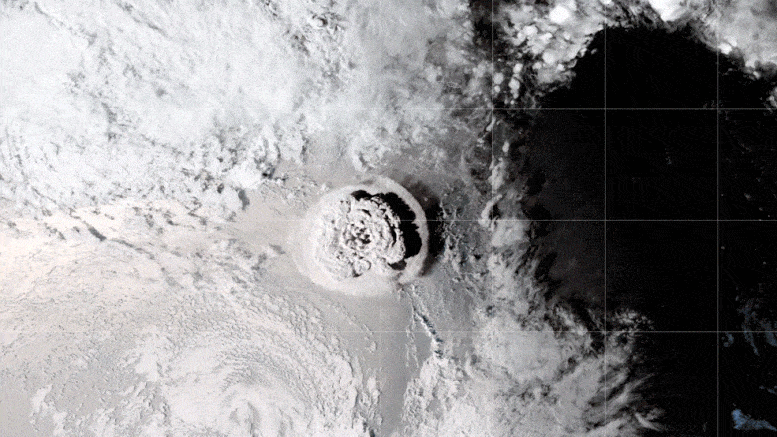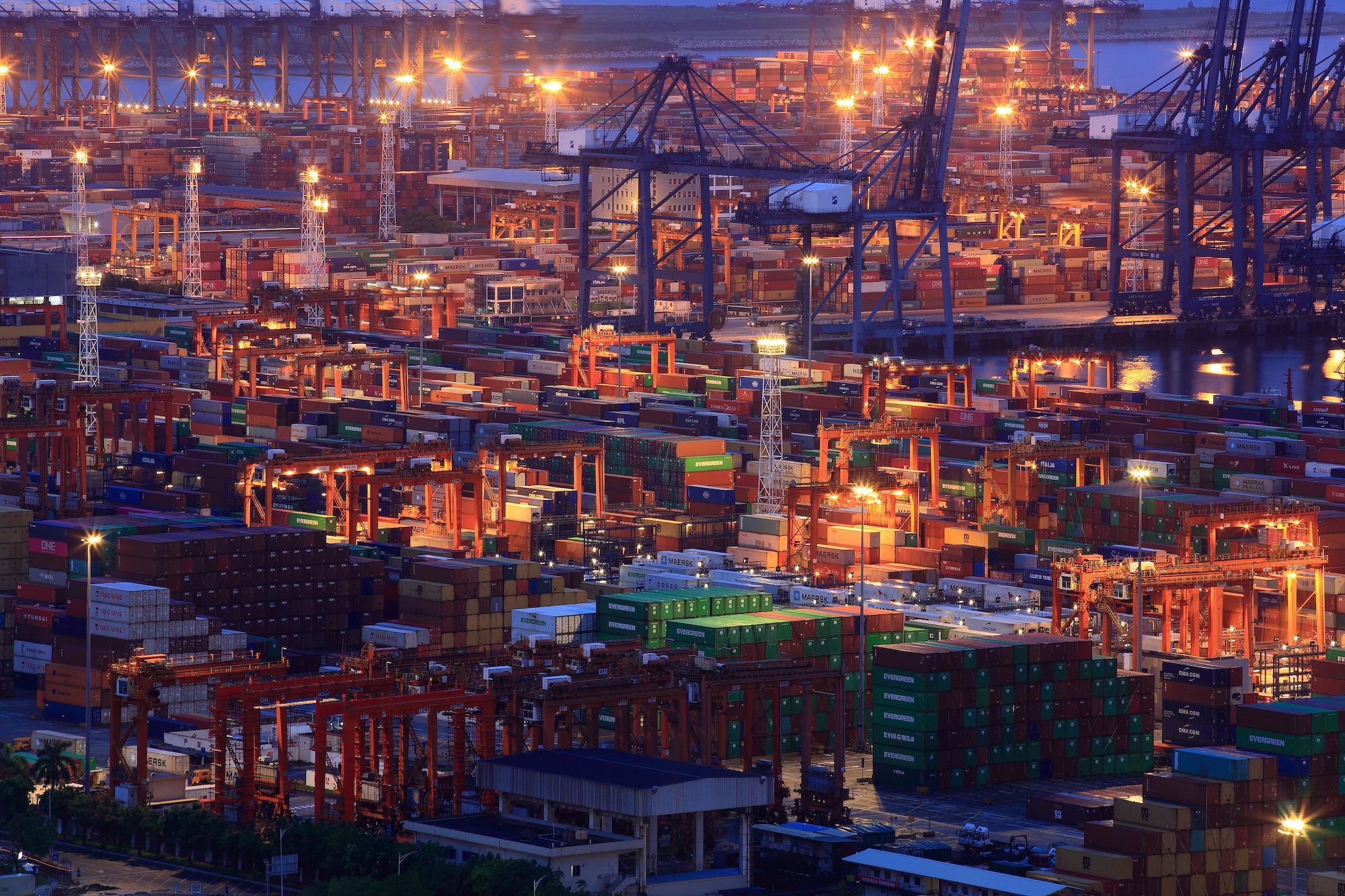

GOES-17 卫星捕捉到了 2022 年 1 月 15 日洪汤加-洪哈派火山水下喷发造成的降落伞云的图像。还可以看到新月形的冲击波和几次轻微的冲击波。 图片来源:Joshua Stevens 使用 GOES 图像由 NOAA 和 NESDIS 提供的 NASA 地球观测站图像
2022 年 1 月 15 日,洪汤加-洪哈派火山爆发时,它在全球范围内引发了大气冲击波、音爆和海啸。 现在,科学家们发现,火山的影响也到达了太空。
分析来自美国宇航局离子通信探测器或 ICON 以及欧洲航天局 (ESA) 的 Swarm 任务和卫星的数据,科学家们发现,在爆炸后的几个小时内,电离层 – 大气中形成了飓风速度和异常电流。位于太空边缘的上带电地球层。
Brian Harding,物理学家[{” attribute=””>University of California, Berkeley, and lead author on a new paper discussing the findings. “It is allowing us to test the poorly understood connection between the lower atmosphere and space.”

The Hunga Tonga-Hunga Ha’apai eruption on January 15, 2022, caused many effects, some illustrated here, that were felt around the world and even into space. Some of those effects, like extreme winds and unusual electric currents were picked up by NASA’s ICON mission and ESA’s (the European Space Agency) Swarm. Image not to scale. Credit: NASA’s Goddard Space Flight Center/Mary Pat Hrybyk-Keith
ICON launched in 2019 to identify how Earth’s weather interacts with weather from space – a relatively new idea supplanting previous assumptions that only forces from the Sun and space could create weather at the edge of the ionosphere. In January 2022, as the spacecraft passed over South America, it observed one such earthly disturbance in the ionosphere triggered by the South Pacific volcano.
“These results are an exciting look at how events on Earth can affect weather in space, in addition to space weather affecting Earth,” said Jim Spann, space weather lead for NASA’s Heliophysics Division at NASA Headquarters in Washington, D.C. “Understanding space weather holistically will ultimately help us mitigate its effects on society.”
When the volcano erupted, it pushed a giant plume of gases, water vapor, and dust into the sky. The explosion also created large pressure disturbances in the atmosphere, leading to strong winds. As the winds expanded upwards into thinner atmospheric layers, they began moving faster. Upon reaching the ionosphere and the edge of space, ICON clocked the windspeeds at up to 450 mph – making them the strongest winds below 120 miles altitude measured by the mission since its launch.
In the ionosphere, the extreme winds also affected electric currents. Particles in the ionosphere regularly form an east-flowing electric current – called the equatorial electrojet – powered by winds in the lower atmosphere. After the eruption, the equatorial electrojet surged to five times its normal peak power and dramatically flipped direction, flowing westward for a short period.
“It’s very surprising to see the electrojet be greatly reversed by something that happened on Earth’s surface,” said Joanne Wu, a physicist at University of California, Berkeley, and co-author on the new study. “This is something we’ve only previously seen with strong geomagnetic storms, which are a form of weather in space caused by particles and radiation from the Sun.”

ESA’s constellation of three Swarm satellites is designed to identify and measure precisely different magnetic signals. This will lead to new insight into many natural processes, from those occurring deep inside the planet, to weather in space caused by solar activity. Credit: ESA/ATG Medialab
The new research, published today (May 10, 2022) in the journal Geophysical Research Letters, is adding to scientists’ understanding of how the ionosphere is affected by events on the ground as well as from space. A strong equatorial electrojet is associated with redistribution of material in the ionosphere, which can disrupt GPS and radio signals that are transmitted through the region.
Understanding how this complex area of our atmosphere reacts in the face of strong forces from below and above is a key part of NASA research. NASA’s upcoming Geospace Dynamics Constellation, or GDC, mission will use a fleet of small satellites, much like weather sensors on the ground, to track the electrical currents and atmospheric winds coursing through the area. By better understanding what affects electrical currents in the ionosphere, scientists can be more prepared to predict severe problems caused by such disturbances.
Reference: “Impacts of the January 2022 Tonga Volcanic Eruption on the Ionospheric Dynamo: ICON-MIGHTI and Swarm Observations of Extreme Neutral Winds and Currents” by Brian J. Harding, Yen-Jung Joanne Wu, Patrick Alken, Yosuke Yamazaki, Colin C. Triplett, Thomas J. Immel, L. Claire Gasque, Stephen B. Mende and Chao Xiong, 10 May 2022, Geophysical Research Letters.
DOI: 10.1029/2022GL098577

“创作者。屡获殊荣的问题解决者。音乐布道者。无法治愈的内向。”





More Stories
詹姆斯·韦伯太空望远镜检测到超大质量黑洞附近的冲击(图片)
研究表明,富含水果和蔬菜的饮食可以降低患心脏病和肾脏疾病的风险
中国的巨大陨石坑里有“天堂”森林,其中的植物适应了严酷的地下生活